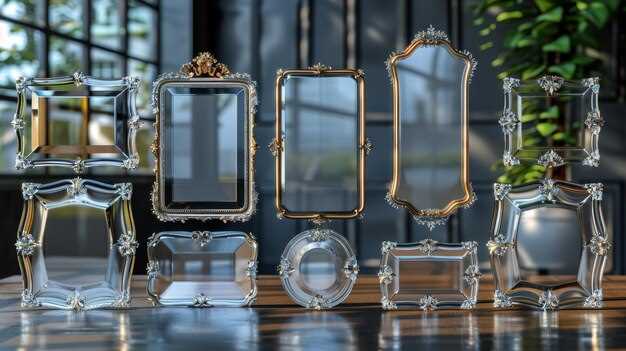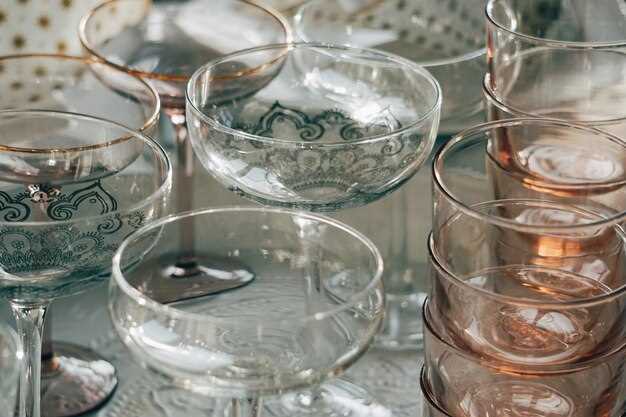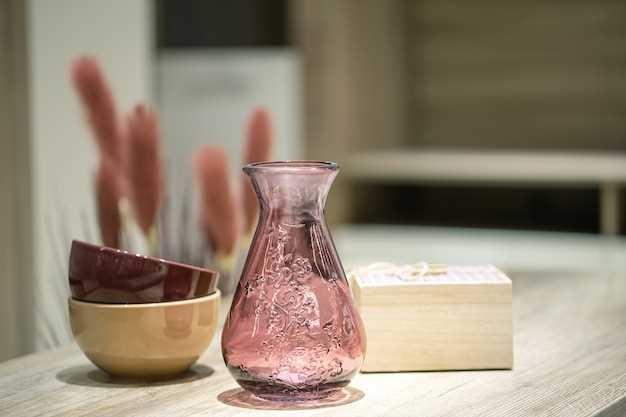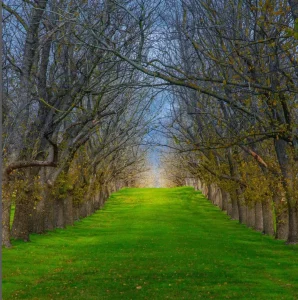
Step into a world where time stands still, and beauty is captured in delicate forms and shimmering hues. Welcome to the realm of antique glassware, a captivating universe that beckons enthusiasts with its rich history and exquisite craftsmanship. Whether you are a seasoned collector or a curious novice, this comprehensive exploration will guide you through the enchanting world of vintage glass treasures.
Prepare to embark on a journey that transcends mere objects and delves into the stories they hold. Each piece of antique glassware is a testament to the ingenuity and artistry of its creators, a tangible link to a bygone era. From the opulent elegance of Art Nouveau to the sleek simplicity of Mid-Century Modern, these glass gems reflect the spirit and aesthetics of their time.
As you delve deeper into this captivating realm, you will discover a myriad of glass types and techniques that have shaped the evolution of this art form. From the delicate intricacy of cut glass to the vibrant allure of stained glass, each style possesses its own unique charm. Uncover the secrets of pressed glass, blown glass, and cameo glass, and marvel at the mastery required to transform molten sand into objects of sheer beauty.
But antique glassware is not merely about aesthetics; it is a window into the past, a tangible connection to the lives and cultures that have come before us. Each piece carries with it a story, a whisper of the hands that crafted it and the lives it has touched. From the grandeur of royal collections to the humble treasures found in flea markets, these glass artifacts offer a glimpse into the lives and tastes of those who came before us.
Understanding the History of Vintage Glassware
Exploring the rich history of vintage glassware allows enthusiasts to gain a deeper appreciation for these exquisite pieces. By delving into the origins, techniques, and styles of antique glassware, collectors can develop a discerning eye and a greater understanding of the value and significance of these timeless treasures.
The Origins of Antique Glassware
The origins of antique glassware can be traced back to ancient civilizations such as Egypt, Mesopotamia, and Rome. These early glassmakers developed innovative techniques to create functional and decorative glass objects, laying the foundation for the art form that would evolve over centuries.
Evolution of Techniques and Styles
Throughout history, glassmaking techniques and styles have evolved, reflecting the cultural and technological advancements of each era. From the delicate and intricate designs of Renaissance glass to the bold and geometric patterns of Art Deco, antique glassware showcases the craftsmanship and artistic expression of its time.
During the Victorian era, glassmakers experimented with new techniques such as cameo glass and art glass, pushing the boundaries of creativity and craftsmanship. The Art Nouveau movement brought a renewed focus on organic forms and flowing lines, while the Art Deco period embraced geometric shapes and bold colors.
Significance and Value
Understanding the history of antique glassware is crucial in determining its significance and value. Factors such as rarity, craftsmanship, condition, and historical context all contribute to the desirability and worth of a piece. By studying the evolution of glassmaking techniques and styles, collectors can identify unique and valuable pieces that stand out in the market.
Moreover, knowing the history behind a particular piece of antique glassware adds an extra layer of appreciation and enjoyment for collectors. Each piece tells a story, connecting the present with the past and preserving a piece of our cultural heritage.
- Explore the origins of antique glassware
- Discover the evolution of techniques and styles
- Uncover the significance and value of antique glassware
By delving into the history of antique glassware, enthusiasts can deepen their knowledge and passion for these remarkable artifacts, making their collecting journey even more rewarding.
Identifying Different Types of Vintage Glassware
When it comes to the world of vintage glassware, there is a wide array of styles and types to explore. Each piece carries its own unique history and characteristics, making it a fascinating area of study for collectors and enthusiasts alike. In this section, we will delve into the various types of vintage glassware and provide insights on how to identify them.
One of the first steps in identifying vintage glassware is understanding the different manufacturing techniques used throughout history. From pressed glass to blown glass, each method leaves distinct marks and patterns on the glass surface. By familiarizing yourself with these techniques, you can begin to recognize the telltale signs that indicate the age and origin of a piece.
Another important aspect to consider when identifying vintage glassware is the style and design. Different time periods and regions have their own unique aesthetic preferences, resulting in a wide range of styles and motifs. From elegant Art Nouveau designs to bold Mid-Century Modern patterns, the visual characteristics of vintage glassware can provide valuable clues in determining its age and origin.
In addition to manufacturing techniques and design styles, it is crucial to examine the specific features of a piece of vintage glassware. This includes analyzing the shape, color, and decorative elements present. For example, certain types of glassware, such as Depression glass, are known for their vibrant colors and intricate patterns. By paying attention to these details, you can further narrow down the type and era of the glassware you are examining.
Lastly, it is important to consult reference materials and experts in the field to enhance your knowledge and understanding of vintage glassware. Books, online resources, and antique glassware collectors can provide valuable insights and guidance in identifying different types of vintage glassware. By continuously learning and expanding your knowledge, you can become a more knowledgeable and discerning collector.
| Key Points: |
|---|
| – Understanding manufacturing techniques |
| – Recognizing different design styles |
| – Analyzing shape, color, and decorative elements |
| – Consulting reference materials and experts |
Evaluating the Condition and Value of Vintage Glassware
When it comes to assessing the worth and condition of vintage glassware, there are several key factors to consider. This section will provide a comprehensive overview of the various elements that collectors should examine in order to accurately evaluate the value and condition of antique glassware.
1. Visual Inspection
One of the first steps in evaluating antique glassware is conducting a thorough visual inspection. This involves carefully examining the overall appearance of the piece, including its color, clarity, and any visible imperfections such as chips, cracks, or scratches. Additionally, it is important to assess the presence and quality of any decorative elements, such as etchings, engravings, or hand-painted designs.
2. Structural Integrity

Assessing the structural integrity of vintage glassware is crucial in determining its value. This involves examining the piece for any signs of damage or weakness, such as wobbly bases, loose handles, or unstable joints. It is also important to check for any repairs or restorations that may have been done, as these can significantly impact the value of the item.
| Condition | Description |
|---|---|
| Excellent | The glassware is in pristine condition with no visible flaws or damage. |
| Good | The glassware may have minor imperfections or signs of wear, but overall, it is still in good condition. |
| Fair | The glassware has noticeable flaws or damage that may affect its appearance or functionality. |
| Poor | The glassware is heavily damaged or in a state of disrepair, significantly reducing its value. |
By carefully evaluating the condition and value of antique glassware, collectors can make informed decisions when buying, selling, or displaying these valuable pieces of history.
Tips for Building and Organizing Your Vintage Glassware Collection
When it comes to expanding and arranging your collection of vintage glassware, there are several key strategies to keep in mind. By following these tips, you can enhance your collection and create an organized display that showcases the beauty and uniqueness of each piece.
1. Curate a Diverse Selection: To build a captivating vintage glassware collection, aim for a wide variety of styles, colors, and patterns. Seek out pieces from different eras and regions to create a collection that tells a story and reflects your personal taste.
2. Research and Educate Yourself: Take the time to learn about the different types of vintage glassware, such as Depression glass, carnival glass, or milk glass. Familiarize yourself with the characteristics, history, and value of each type to make informed purchasing decisions and appreciate the significance of each piece in your collection.
3. Network with Other Collectors: Joining collector communities, attending antique fairs, or participating in online forums can provide valuable opportunities to connect with fellow enthusiasts. By sharing knowledge, experiences, and even potential trading opportunities, you can expand your collection and gain insights from others who share your passion.
4. Carefully Consider Display Options: When organizing your vintage glassware collection, think about how you want to showcase your pieces. Display cabinets with glass shelves or wall-mounted shelves can provide a visually appealing backdrop while keeping your collection safe from dust and accidental damage. Consider grouping similar pieces together or arranging them by color or era for a cohesive and visually pleasing display.
5. Properly Store and Handle: To preserve the condition and value of your vintage glassware, it’s important to handle and store each piece with care. Use soft, lint-free cloths or gloves when handling delicate pieces to avoid fingerprints or accidental drops. When storing, wrap each item individually in acid-free tissue paper or bubble wrap to protect against scratches and breakage.
6. Document and Catalog: Keep a detailed inventory of your vintage glassware collection, including information such as the manufacturer, pattern, date of production, and any notable characteristics. This documentation will not only help you track your collection but also assist in determining the value and authenticity of each piece.
7. Regularly Clean and Maintain: Vintage glassware requires regular cleaning to maintain its beauty and shine. Use mild, non-abrasive cleaners and avoid harsh chemicals that can damage the glass. Gently hand wash each piece and dry thoroughly to prevent water spots or residue.
By following these tips, you can build a diverse and well-organized vintage glassware collection that brings joy and admiration to both yourself and fellow enthusiasts.
Cleaning and Caring for Vintage Glass Collectibles
Preserving the beauty and longevity of your cherished vintage glass collectibles requires proper cleaning and care. By following these essential guidelines, you can ensure that your antique glassware remains in pristine condition for years to come.
Gentle Cleaning Techniques
When it comes to cleaning antique glassware, a delicate touch is crucial. Avoid using harsh chemicals or abrasive materials that can damage the glass surface. Instead, opt for mild, non-abrasive cleaners specifically designed for delicate glass. Dilute the cleaner with water and apply it gently using a soft cloth or sponge. Remember to rinse thoroughly and dry the glassware immediately to prevent water spots.
Handling and Storage
Proper handling and storage are vital for preserving the integrity of antique glassware. Always handle glass collectibles with clean, dry hands to avoid leaving fingerprints or oils on the surface. When moving or transporting glassware, use soft padding or cloth to protect it from potential scratches or breakage. Additionally, store your antique glassware in a cool, dry place away from direct sunlight to prevent fading or discoloration.
By following these cleaning and caring techniques, you can maintain the beauty and value of your antique glass collectibles, allowing future generations to appreciate their timeless elegance.
Where to Buy and Sell Vintage Glass Collectibles
Are you an avid enthusiast of vintage glass collectibles? If so, you may be wondering where to find the best places to buy and sell these unique and valuable items. In this section, we will explore various avenues and platforms that cater to collectors like yourself, providing you with a range of options to expand your collection or find new homes for your treasured pieces.
1. Online Marketplaces
One of the most convenient and accessible ways to buy and sell vintage glassware is through online marketplaces. Platforms such as eBay, Etsy, and Ruby Lane offer a vast selection of antique glass items from sellers all around the world. These websites allow you to browse through listings, compare prices, and communicate directly with sellers. It’s important to carefully review the seller’s reputation and product descriptions to ensure authenticity and quality.
2. Antique Shops and Flea Markets

If you prefer a more hands-on approach to buying and selling vintage glassware, visiting antique shops and flea markets can be a rewarding experience. These physical locations often have knowledgeable staff who can provide insights and guidance on your purchases. Additionally, you have the opportunity to examine the glassware in person, assessing its condition and authenticity before making a decision. Keep in mind that bargaining is common in these settings, so don’t be afraid to negotiate for the best price.
3. Auction Houses
Auctions can be an exciting way to acquire or sell antique glass collectibles. Local auction houses often hold specialized events dedicated to vintage glassware, attracting both collectors and dealers. Participating in an auction allows you to compete with other enthusiasts, potentially acquiring rare and valuable pieces. It’s essential to familiarize yourself with the auction process, set a budget, and conduct thorough research on the items you are interested in to make informed bidding decisions.
4. Collector Clubs and Conventions
Joining collector clubs and attending conventions is an excellent way to connect with fellow enthusiasts and gain access to exclusive buying and selling opportunities. These gatherings often feature exhibitions, presentations, and trading events specifically tailored to vintage glassware. By networking with other collectors, you can learn about upcoming sales, swap meets, and private collections that may not be available through traditional channels.
Remember, whether you are buying or selling vintage glass collectibles, it’s crucial to educate yourself about the market, understand the value of different pieces, and verify their authenticity. By exploring various avenues and utilizing the resources available to you, you can enhance your collection and engage in a vibrant community of vintage glassware enthusiasts.


